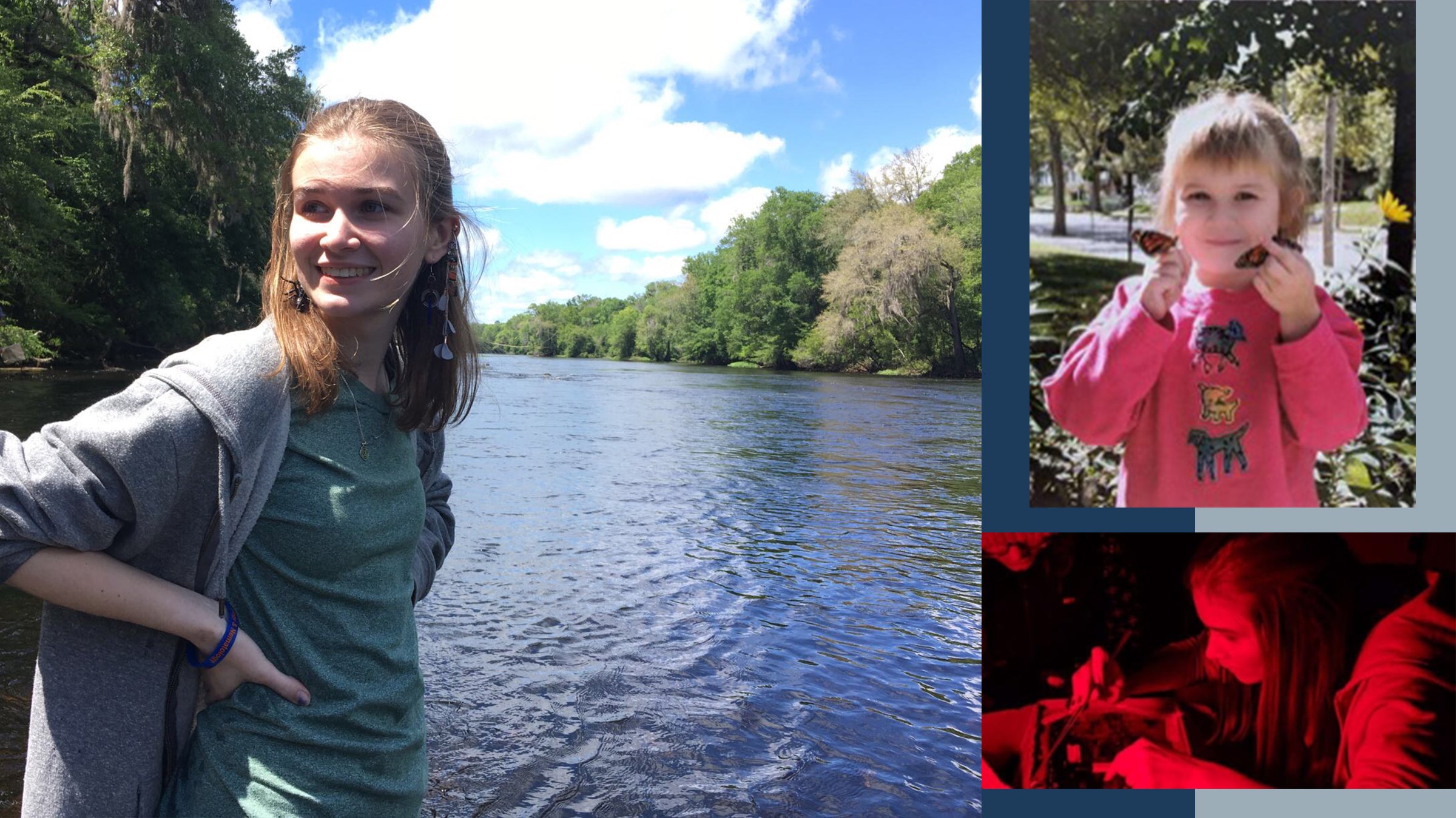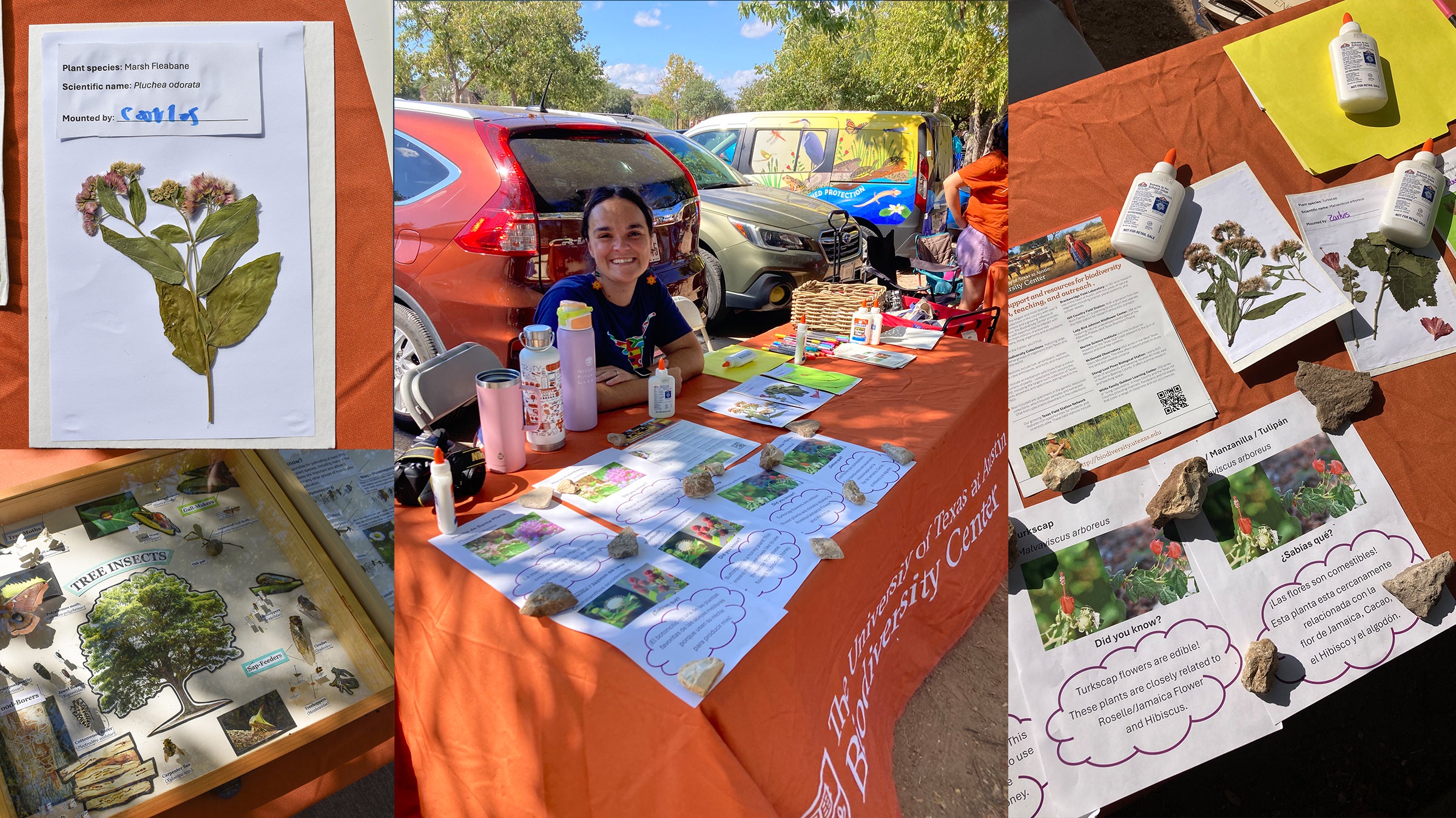
L: Texas Spiny Lizard in modern photo. R: another Texas Spiny Lizard from decades ago. (Right photo from Field Studies of the Behavior of the Lizard Sceloporus spinosus floridanus)
When UT became an official university in 1883, a biology program, much less a Herpetology Collection, was not on the agenda. It didn’t mean there were not some advocates pushing for physiology and botany classes, but it would be about half a century before the Herpetology Collection had its first catalogued specimens. Another fifty years or so would have to pass before UT would become a herpetology juggernaut.
The first herpetology work at UT occurred in the early 1900s, and was actually done on campus. The focal species of that research is now recognized as Sceloporus olivaceus, the Texas Spiny Lizard. A paper titled “Field Studies of the Behavior of the Lizard Sceloporus spinosus floridanus,” was published in 1909 in the Bulletin of the University of Texas at Austin, and was written by Horatio Hackett Newman and John Thomas Patterson. At the time, Newman was the new chair of the School of Zoology, and an embryologist interested in the processes of multiple births. Patterson was a new instructor at UT, an embryologist himself, but would later become a driving force with genetics research on campus, as well as department chair.

John Patterson from 1951. (Photo: Cactus Yearbook)
This paper was an observational field study of the Texas Spiny Lizard, expanding what was known about the lizard in captivity. At the time, the site of the study, the UT campus and surrounds, were very different. From the paper: “The Campus of the University of Texas was found to furnish most favorable life conditions for Sceloporus consisting as it does of a mesquite grove with all of its ecological accompaniments only slightly altered.” On campus, Newman and Patterson observed the lizard’s daily behaviors, and paid special attention to the role trees played as sources of food, protection, and sun-basking.
Because the School of Zoology was very small in its early years, instructors had to teach diverse subjects, often in areas they were not terribly specialized, or had little interest. Newman needed to have a physiologist on the faculty, and to do this, he simply changed Patterson’s title to “instructor in physiology.” It was an administrative tactic and one that would dampen the relationship between the two men as this move infuriated Patterson.
However, Patterson did not keep this despised title long. Newman resigned in 1911, and Patterson was promoted to adjunct professor of zoology and chair where he would have a long impactful presence.
From this point, not much happened in the world of herpetology at UT. That would change with the arrival of W. (William) Frank Blair in 1946. He was the first to have a lasting impact on herpetology research at the university, as well as to significantly add to the specimen collection.

Blair around 1962. (Photo: Bulletin of the Ecological Society of America)
Blair was born in 1912 in Texas, but his family moved to Oklahoma in 1916. Here he developed an early interest in the natural world while growing up on his family’s strawberry farm. His time as a boy scout, and two influential high school biology teachers, would further draw him into the natural sciences. As an undergraduate, he studied zoology and botany at the University of Tulsa, earned his MS in Zoology from the University of Florida, and his PhD in Zoology from the University of Michigan. After serving in World War II, Blair accepted a position at UT in 1946, and was promoted to professor in 1955.
Blair’s initial research focus was on mammals, with interests in ecology and distribution centering on the concept of a home range. With several colleagues, he wrote the widely-used Manual of Vertebrates. Blair's interests would soon shift to amphibians and lizards.
In Austin, Blair and his wife Fern bought a 10-acre property where he and many of his graduate students conducted quite a bit of research. Here he carried out studies of amphibian reproduction. During one of the worst droughts in central Texas’ history (1952-1956), he and his students observed over 3000 individual Texas Spiny Lizards for five years. This resulted in the highly-influential, The Rusty Lizard, A Population Study (1960). It was one of the first studies that calculated age-specific fecundity (maximum reproductive potential over lifetime) and survival for a species. The Blairs eventually donated their property, called “The Blair Woods,” to the Travis Audubon in 1985.
In the 1950s, Blair initiated a program to study whether different toad species were able to produce reproductively-viable hybrids, meaning their offspring were not sterile. They had some success providing some measure of relatedness between the two parental species.
Blair’s focus soon shifted to Bufo, a genus of true toads in the amphibian family Bufonidae. With his colleagues, he would analyze factors such as hybridization potential, mating call, breeding periods, serum proteins, parotid gland content, karyotype, skull morphology, and laryngeal structure. He also studied the parallels of Bufo in the faunas of desert regions in North and South America. The led to his involvement in the International Biological Program, a fifty-seven-nation project sponsored by the International Council of Scientific Unions, which had as its major goal the achievement of a better understanding of the world's ecosystems.

Woodhouse's toad (Bufo woodhousii)
Many of Blair’s students would also have very distinguished careers of their own. Just some of his students who would also continue to teach themselves include Jack Fouquette, Carl Gerhardt, and Craig Nelson.
And what about the early years of the Herpetology Collection? Fortunately, that was a focus almost as soon as Blair was hired at UT. He founded the Texas Natural History Collections (now the Biodiversity Collections) in the late 1940s. The earliest catalogued herpetology specimens date to 1939, specimens received in exchange from the University of Florida, with just a few others collected in early to mid 1940s. Initial collection growth outside of this coincided with the large-scale trips organized by Blair between 1948-1955 to west Texas and the Panhandle, as well as many local and regional (particularly east Texas) collecting trips by Blair and his students.
In our second blog on the history of UT Herpetology, we take a closer look at Blair’s work on amphibian communication. This work was a precursor for the research of Dr. Mike Ryan who studies animal behavior, with most of his work has addressing sexual selection and communication in frogs and fish. Our third blog on the history of UT Herptology examines Dr. Eric Pianka's research on lizards. Part four explores the establishment of the Texas Memorial Museum and current research in herpetology as of 2022.
SOURCES:
Communication with Dr. Travis LaDuc and Dr. David Hillis
Hubbs, Clark. “Blair, Promoter of ‘Big Biology,’ Was Avid Environmentalist” The University of Texas: Zoology Journal, Vol. IV, 1985.
Hubbs, Clark. “Well-Known Zoologists Retire: Blair Looks Back on a Distinguished Career.” The University of Texas: Zoology Journal, Vol I, 1983.
Oliver, C.P. “Zoology,” Discovery: Research and Scholarship at the University of Texas at Austin, Centennial Issue 1983, pg. 13-16.
Rosales, Jessica; LaDuc, Travis; Hendrickson, Dean. Annotated type catalogue of the vertebrate collections of the Texas Natural History Collections



